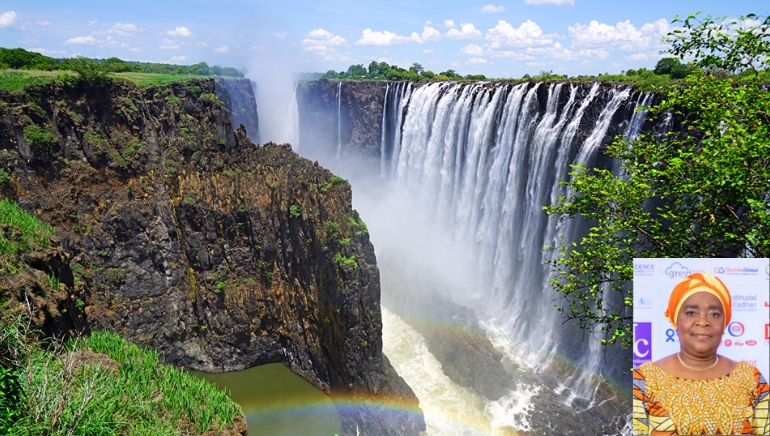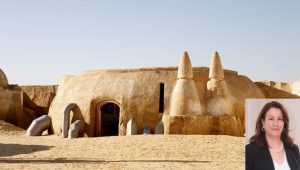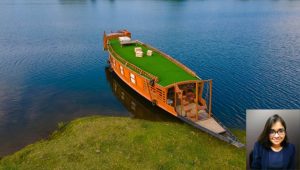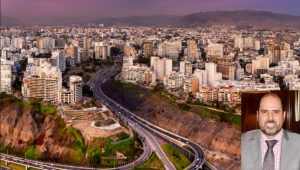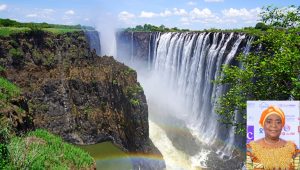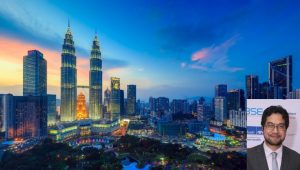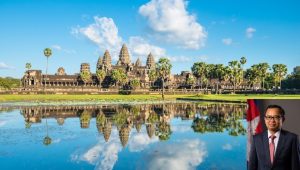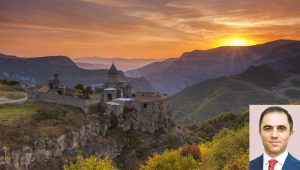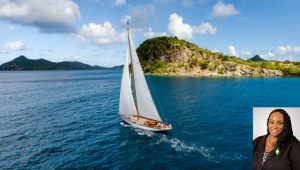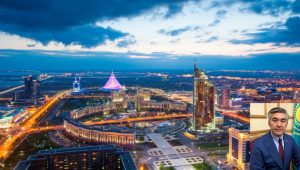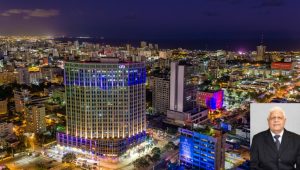THE WILDLIFE PARADISE
The Democratic Republic of the Congo is situated in the central part of Africa and is bordered by the Atlantic Ocean. The major attraction, or rather the reason for most visitors to the country, is for tourism purposes. It is a blessed country as it holds the few remaining species of three types of animals: the endangered mountain gorillas, the Okapis, and the lowland gorillas.
By Her Excellency Mrs. Rosette Mossi Nyamale, Ambassador of the Democratic Republic of Congo to India
The eastern part of the Democratic Republic of Congo (DRC), which includes Nord Kivu and Sud Kivu, are the major hotspots for most tourism activity in DRC. The Virunga National Park is home to the last individuals of the mountain gorillas in the world and is located in Sud Kivu. The maximum number of tourists that visit the country do so with the purpose of visiting the gorillas in the wild. The gorilla families of Virunga National Park are habituated and stay in groups of up to 40 members, which you may be able to spot on your visit to the park. The country also has various other attractions, including Virunga National Park, Mount Nyiragongo, the Congo River, and the Bonobo.
CONGO RIVER
The Congo River is the world’s deepest river and is the second largest river in the world by volume of water discharged after the River Amazon. Scientists have calculated that the entire Congo Basin accounts for 13 percent of global hydropower potential. Currently, there are about 40 hydropower plants in the Congo Basin. In terms of aquatic life, the Congo River Basin has over 700 fish species and crocodiles, among others.
VIRUNGA NATIONAL PARK
The park was created in 1925 by King Albert I of Belgium, as the first National Park on the continent of Africa. It was founded primarily to protect the mountain gorillas living in the forests of the Virunga Mountains controlled by the Belgian Congo. It was later expanded north to include the Rwindi Plains, Lake Edward, and the Rwenzori Mountains in the far north. Today, it has over 480 gorillas.
LAKE KIVU
Lake Kivu is one of the African Great Lakes. The world’s tenth-largest inland island, Idjwi, lies in Lake Kivu, as does the tiny island of Tshegera, which also lies within the boundaries of Virunga National Park. Lake Kivu has recently been found to contain approximately 55 billion cubic metres of dissolved methane gas at a depth of 300 metres. Native fish include species of Barbus, Clarias, and Halochromic, as well as Nile Tilapia, Limnothrissa miodon, and Tanganyika sardine.
LIVINGSTONE FALLS
Livingstone Falls are a succession of enormous rapids and cataracts on the lower course of the Congo River in west equatorial Africa, downstream from Malebo Pool in the Democratic Republic of the Congo. The falls are named after the explorer, David Livingstone.
LOLA YA BONOBO
Lola ya Bonobo is the world’s only sanctuary for orphaned bonobos located just south of the suburb of Kimwenza at the Petites Chutes de la Lukaya, Kinshasa, in the Democratic Republic of the Congo. It was established in 1994 by Claudine Andre and is a home to over 60 bonobos.
BOYOMA FALLS
Boyoma Falls, formerly known as Stanley Falls, consists of seven cataracts, each no more than 5 m high, extending over more than 100 km along a curve of the Lualaba River between the river port towns. A 1000m portage railway bypasses the series of rapids, connecting Kisangani and Ubundu.
THE HISTORICAL BUILDINGS
The historical buildings in the city include the chapel of the American Baptist Missionary Society (1891) and a Roman Catholic cathedral (1914).
MOUNT NYAMURAGIRA
Mount Nyamuragira is Africa’s most active volcano, situated in Nord Kivu, about 25 km from Lake Kivu. It is an active composite volcano in the Virunga Mountains. The volcano has erupted over 40 times since 1880. It is responsible for a major part of sulphur dioxide pollution in the world. The volcano has created lava fields.
MOUNT NYIRAGONGO
Mount Nyiragongo is one of the few volcanoes in the world that have a permanent lava lake in it. In fact, it is often considered the largest lava lake in the world. Located in Nord Kivu, the volcano is very active, with frequent eruptions. Eruptions at the volcano produce very fluid lava of a rare type.
THE OKAPI WILDLIFE RESERVE
The Okapi Wildlife Reserve is a UNESCO World Heritage site and one of the largest wildlife conservation areas in the Democratic Republic of Congo. It is found in the northeastern part of the country close to the borders of Uganda and South Sudan. The reserve covers an area of 13,700 square kilometers, which is only one-fifth of the great Ituri forest.
MATUPI CAVE – ORIENTALE, MOUNT HOYO
This is an important archaeological monument situated in Orientale, Mount Hoyo in the Ituri rainforest. The cave contains sediments which have recorded a sequence of human occupation lasting for the last 40,000 years. Some of the oldest microlithic tools in the world used for arrows and saws have been found here. When these tools were made 12,000 years ago, there was a savannah here.
THYSVILLE CAVES (MBANZA-NGUNGU CAVES) – BAS-CONGO
This is a group of caves in Bas-Congo that has a record of endemic blind fish, Caecobarbus geertsii Boulenger, dating from 1921. The seven caves are not explored and may contain other endemic animals as well.
FRÈRE GILLET BOTANIC GARDENS (KISANTU BOTANICAL GARDEN)
This is a more than 100 years old botanical garden with numerous unique and rare species, located 120 km south of Kinshasa, in the Bas-Congo province. The garden is primarily renowned for its collection of rare orchids. The Democratic Republic of the Congo offers tourists many unique opportunities to see wildlife, indigenous cultures and geological wonders not found easily elsewhere in Africa. In the capital city Kinshasa, one can visit the river and the city golf course. There is Ivory Market, from where Congolese art, tribal masks, and other beautiful goods can be procured. Located outside of Kinshasa is a Bonobo monkey preserve called Lola Ya Bonobo. In the DRC, one can trek to see both mountain and lowland gorillas in the wild, meet pygmies still practising their traditional way of life in the forests, spot bonobos and okapi, and see boiling Lava Lake in the crater of the Nyiragongo volcano.





